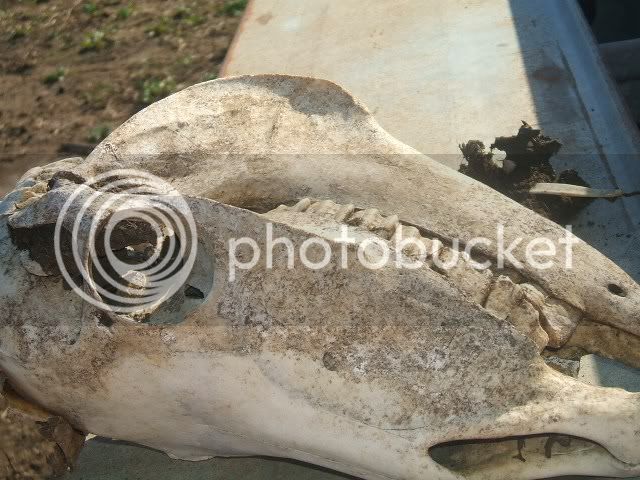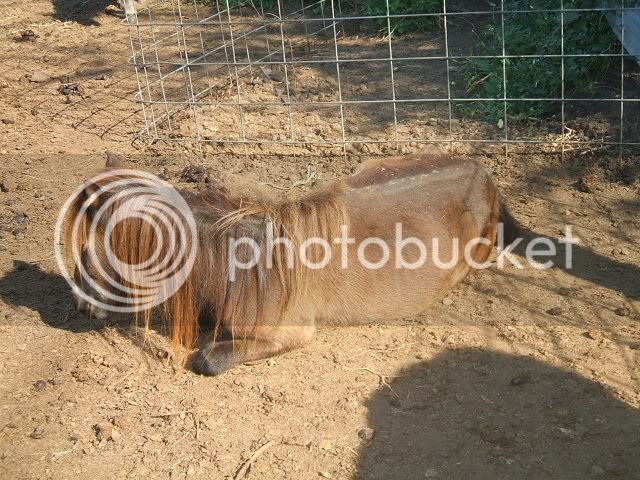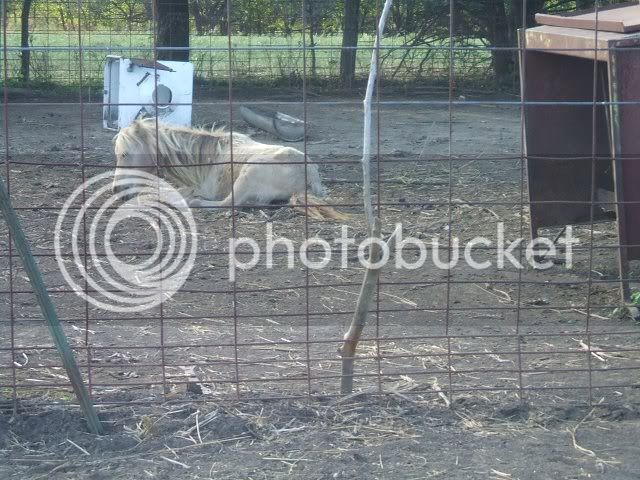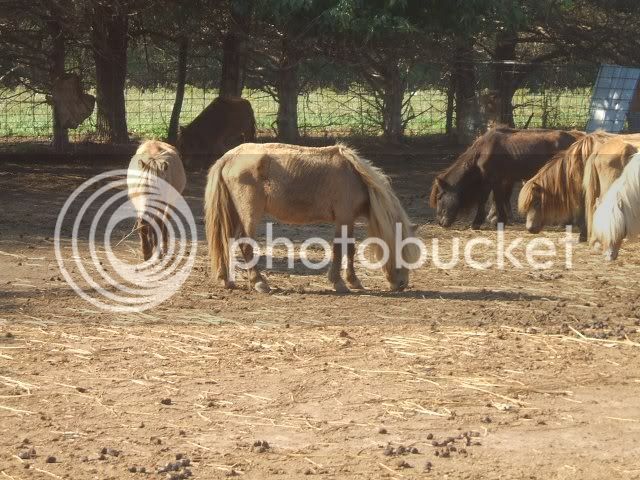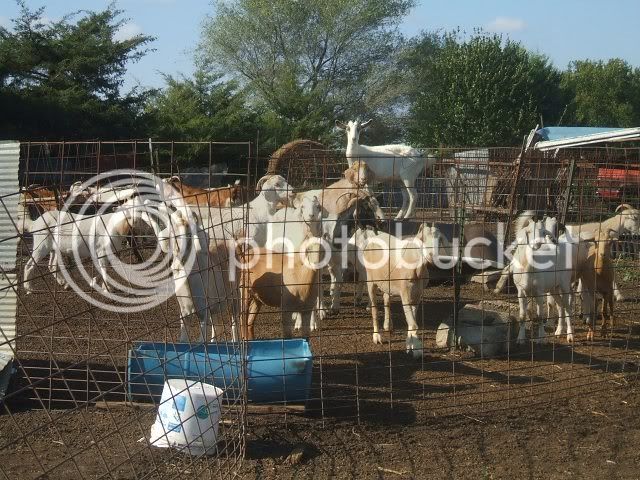<H1>[SIZE=18pt]Hi everyone. I have been doing some research and this is what I have found. First of all, I have highlighted in red the parts of the statutes that I believe would apply to the Trembly case. This is how I interpret the situation and I may be wrong, so please, all of you, look it over and make your own decision. [/SIZE]
[SIZE=18pt]I believe that Mr Trembly is guilty of a1 and a2 in statute 21-4310. Therefore making his punishment fall under d2 of the same statute, stating that the first conviction is a nonperson misdemeanor and the second and subsequent convictions would be felonies. [/SIZE]
[SIZE=18pt]Then in statue 21-4311, I found something very interesting that I also highlighted in red referring to the seizure of abused animals that fall under the 21-4310 statute (which Mr. Trembly's certainly would). The way I read it, the horses can simply be taken off of the property, public or private, to be rescued. It also states in section c that the guilty party will be held responsible for the care and treatment of seized animals. I realize there are many "ifs" here, but I just wanted to share one interpretation of it. There may be some hope here in these laws yet. [/SIZE]
[SIZE=18pt]21-4310[/SIZE]
[SIZE=18pt]Chapter 21.--CRIMES AND PUNISHMENTS [/SIZE][SIZE=18pt]PART II.--PROHIBITED CONDUCT [/SIZE][SIZE=18pt]Article 43.--CRIMES AGAINST THE PUBLIC MORALS [/SIZE]
[SIZE=18pt] 21-4310. Cruelty to animals. [/SIZE]
[SIZE=18pt](a) Cruelty to animals is: [/SIZE]
[SIZE=18pt] (1) Intentionally and maliciously killing, injuring, maiming, torturing, burning or mutilating any animal; [/SIZE]
[SIZE=18pt] (2) intentionally abandoning or leaving any animal in any place without making provisions for its proper care; [/SIZE]
[SIZE=18pt] (3) having physical custody of any animal and intentionally failing to provide such food, potable water, protection from the elements, opportunity for exercise and other care as is needed for the health or well-being of such kind of animal; [/SIZE]
[SIZE=18pt] (4) intentionally using a wire, pole, stick, rope or any other object to cause an equine to lose its balance or fall, for the purpose of sport or entertainment; or [/SIZE]
[SIZE=18pt] (5) intentionally causing any physical injury other than the acts described in subsection (a)(1). [/SIZE]
[SIZE=18pt] (b) The provisions of this section shall not apply to: [/SIZE]
[SIZE=18pt] (1) Normal or accepted veterinary practices; [/SIZE]
[SIZE=18pt] (2) bona fide experiments carried on by commonly recognized research facilities; [/SIZE]
[SIZE=18pt] (3) killing, attempting to kill, trapping, catching or taking of any animal in accordance with the provisions of chapter 32 or chapter 47 of the Kansas Statutes Annotated; [/SIZE]
[SIZE=18pt] (4) rodeo practices accepted by the rodeo cowboys' association; [/SIZE]
[SIZE=18pt] (5) the humane killing of an animal which is diseased or disabled beyond recovery for any useful purpose, or the humane killing of animals for population control, by the owner thereof or the agent of such owner residing outside of a city or the owner thereof within a city if no animal shelter, pound or licensed veterinarian is within the city, or by a licensed veterinarian at the request of the owner thereof, or by any officer or agent of an incorporated humane society, the operator of an animal shelter or pound, a local or state health officer or a licensed veterinarian three business days following the receipt of any such animal at such society, shelter or pound; [/SIZE]
[SIZE=18pt] (6) with respect to farm animals, normal or accepted practices of animal husbandry, including the normal and accepted practices for the slaughter of such animals for food or by-products and the careful or thrifty management of one's herd or animals, including animal care practices common in the industry or region; [/SIZE]
[SIZE=18pt] (7) the killing of any animal by any person at any time which may be found outside of the owned or rented property of the owner or custodian of such animal and which is found injuring or posing a threat to any person, farm animal or property; [/SIZE]
[SIZE=18pt] (8) an animal control officer trained by a licensed veterinarian in the use of a tranquilizer gun, using such gun with the appropriate dosage for the size of the animal, when such animal is vicious or could not be captured after reasonable attempts using other methods; [/SIZE]
[SIZE=18pt] (9) laying an equine down for medical or identification purposes; [/SIZE]
[SIZE=18pt] (10) normal or accepted practices of pest control, as defined in subsection (x) of K.S.A. 2-2438a, and amendments thereto; or [/SIZE]
[SIZE=18pt] (11) accepted practices of animal husbandry pursuant to regulations promulgated by the United States department of agriculture for domestic pet animals under the animal welfare act, public law 89-544, as amended and in effect on July 1, 2006. [/SIZE]
[SIZE=18pt] © As used in this section: [/SIZE]
[SIZE=18pt] (1) "Equine" means a horse, pony, mule, jenny, donkey or hinny. [/SIZE]
[SIZE=18pt] (2) "Maliciously" means a state of mind characterized by actual evil-mindedness or specific intent to do a harmful act without a reasonable justification or excuse. [/SIZE]
[SIZE=18pt] (d) (1) Cruelty to animals as described in subsection (a)(1) is a nonperson felony. Upon conviction of this subsection, a person shall be sentenced to not less than 30 days or more than one year's imprisonment and be fined not less than $500 nor more than $5,000. During the mandatory 30 days imprisonment, such offender shall have a psychological evaluation prepared for the court to assist the court in determining conditions of probation. Such conditions shall include, but not be limited to, the completion of an anger management program. [/SIZE]
[SIZE=18pt] (2) The first conviction of cruelty to animals as described in subsection (a)(2), (a)(3), (a)(4) and (a)(5) is a class A nonperson misdemeanor. The second or subsequent conviction of cruelty to animals as described in subsection (a)(2), (a)(3), (a)(4) and (a)(5) is a non-person felony. Upon such conviction, a person shall be sentenced to not less than five days or more than one year's imprisonment. [/SIZE]
[SIZE=18pt] (e) For purposes of this section, "animal" shall have the meaning ascribed to it in K.S.A. 21-4313, and amendments thereto. [/SIZE][SIZE=18pt] History: ch. 119, § 1; L. 2006, ch. 126, § 1; July 1. [/SIZE]
</H1>
[SIZE=18pt]21-4311[/SIZE]
[SIZE=18pt]Chapter 21.--CRIMES AND PUNISHMENTS [/SIZE][SIZE=18pt]PART II.--PROHIBITED CONDUCT [/SIZE][SIZE=18pt]Article 43.--CRIMES AGAINST THE PUBLIC MORALS [/SIZE]
[SIZE=18pt] 21-4311. Cruelty to animals; custody of animal; disposition; damages for killing, when; expenses of care assessed owner, when; duty of county or district attorney. (a) Any public health officer, law enforcement officer, licensed veterinarian or officer or agent of any incorporated humane society, animal shelter or other appropriate facility may take into custody any animal, upon either private or public property, which clearly shows evidence of cruelty to animals, as defined in K.S.A. 21-4310 and amendments thereto. Such officer, agent or veterinarian may inspect, care for or treat such animal or place such animal in the care of a duly incorporated humane society or licensed veterinarian for treatment, boarding or other care or, if an officer of such humane society or such veterinarian determines that the animal appears to be diseased or disabled beyond recovery for any useful purpose, for humane killing. If the animal is placed in the care of an animal shelter, the animal shelter shall notify the owner or custodian, if known or reasonably ascertainable. If the owner or custodian is charged with a violation of K.S.A. 21-4310, and amendments thereto, the board of county commissioners in the county where the animal was taken into custody shall establish and approve procedures whereby the animal shelter may petition the district court to be allowed to place the animal for adoption or euthanize the animal at any time after 20 days after the owner or custodian is notified or, if the owner or custodian is not known or reasonably ascertainable after 20 days after the animal is taken into custody, unless the owner or custodian of the animal files a renewable cash or performance bond with the county clerk of the county where the animal is being held, in an amount equal to not less than the cost of care and treatment of the animal for 30 days. Upon receiving such petition, the court shall determine whether the animal may be placed for adoption or euthanized. The board of county commissioners in the county where the animal was taken into custody shall review the cost of care and treatment being charged by the animal shelter maintaining the animal. [/SIZE]
[SIZE=18pt] (b) The owner or custodian of an animal placed for adoption or killed pursuant to subsection (a) shall not be entitled to recover damages for the placement or killing of such animal unless the owner proves that such placement or killing was unwarranted. [/SIZE]
[SIZE=18pt] © Expenses incurred for the care, treatment or boarding of any animal, taken into custody pursuant to subsection (a), pending prosecution of the owner or custodian of such animal for the crime of cruelty to animals, as defined in K.S.A. 21-4310 and amendments thereto, shall be assessed to the owner or custodian as a cost of the case if the owner or custodian is adjudicated guilty of such crime. [/SIZE]
[SIZE=18pt] (d) Upon the filing of a sworn complaint by any public health officer, law enforcement officer, licensed veterinarian or officer or agent of any incorporated humane society, animal shelter or other appropriate facility alleging the commission of cruelty to animals, as defined in K.S.A. 21-4310 and amendments thereto, the county or district attorney shall determine the validity of the complaint and shall forthwith file charges for the crime if the complaint appears to be valid. [/SIZE]
[SIZE=18pt] (e) If a person is adjudicated guilty of the crime of cruelty to animals, as defined in K.S.A. 21-4310 and amendments thereto, and the court having jurisdiction is satisfied that an animal owned or possessed by such person would be in the future subjected to such crime, such animal shall not be returned to or remain with such person. Such animal may be turned over to a duly incorporated humane society or licensed veterinarian for sale or other disposition. [/SIZE][SIZE=18pt] History: L. 1977, ch. 116, § 3; L. 1986, ch. 127, § 1; L. 1996, ch. 44, § 1; July 1. [/SIZE]
[SIZE=18pt]21-4313[/SIZE]
[SIZE=18pt]Chapter 21.--CRIMES AND PUNISHMENTS [/SIZE][SIZE=18pt]PART II.--PROHIBITED CONDUCT [/SIZE][SIZE=18pt]Article 43.--CRIMES AGAINST THE PUBLIC MORALS [/SIZE]
[SIZE=18pt] 21-4313. Definitions. As used in this act [*], unless the context otherwise requires; [/SIZE]
[SIZE=18pt] (1) "Animal" means every living vertebrate except a human being. [/SIZE]
[SIZE=18pt] (2) "Farm animal" means an animal raised on a farm or ranch and used or intended for use as food or fiber. [/SIZE]
[SIZE=18pt] (3) "Retailer" means a person regularly engaged in the business of selling tangible personal property, services or entertainment for use or consumption and not for resale. [/SIZE]
[SIZE=18pt] (4) "Wild animal" means a living mammal or marsupial which is normally found in the wild state, but shall not include a farm animal. [/SIZE]
[SIZE=18pt] (5) "Domestic pet" means any domesticated animal which is kept for pleasure rather than utility. [/SIZE][SIZE=18pt] History: L. 1977, ch. 116, § 1; April 27. [/SIZE]
 :
:
 :
:
 :
:



